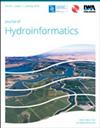利用最小夜间流量预测管道故障的可解释机器学习方法
IF 2.2
3区 工程技术
Q3 COMPUTER SCIENCE, INTERDISCIPLINARY APPLICATIONS
引用次数: 0
摘要
最小夜间流量(MNF)和管道故障是了解配水管网(WDN)渗漏情况的常用方法。本文采用数据驱动方法,将线性模型、随机森林和神经网络应用于最小夜间流量和管道故障预测。首先,对模型进行训练,以估算英国 800 多个实际 DMA 的历史平均 MNF。这一问题的特征是根据管道记录构建的,其中详细记录了每条管道的长度、直径、流量、使用年限、材料和客户连接数量。结果表明,仅使用这些因素就可以解释历史平均 MNF 65% 的变化。其次,提出了一种新方法,将模型预测解构为泄漏贡献分数 (LCS),估算出 DMA 中每条管道对 MNF 的贡献程度。为了验证这种新方法,LCS 值被用于根据历史管道故障对管道进行分类,并与为此直接训练的模型进行比较。结果表明,LCS 在这项任务中表现出色,AUC 达到 0.71。此外,在现实世界的 DMA 示例中,LCS 和直接训练的模型在很多情况下都能达成一致。本文章由计算机程序翻译,如有差异,请以英文原文为准。
An explainable machine learning approach to the prediction of pipe failure using minimum night flow
Both minimum night flow (MNF) and pipe failures are common ways of understanding leakage within water distribution networks (WDNs). This article takes a data-driven approach and applies linear models, random forests, and neural networks to MNF and pipe failure prediction. First, models are trained to estimate the historic average MNF for over 800 real-world DMAs from the UK. Features for this problem are constructed from pipe records which detail the length, diameter, volume, age, material, and number of customer connections of each pipe. The results show that 65% of the variation in historic average MNF can be explained using these factors alone. Second, a novel method is proposed to deconstruct the models' predictions into a leakage contribution score (LCS), estimating how each individual pipe in a DMA has contributed to the MNF. In order to validate this novel approach, the LCS values are used to classify pipes based on historic pipe failure and are compared against models directly trained for this. The results show that the LCS performs well at this task, achieving an AUC of 0.71. In addition, it is shown that both LCS and directly trained models agree in many cases on an example real-world DMA.
求助全文
通过发布文献求助,成功后即可免费获取论文全文。
去求助
来源期刊

Journal of Hydroinformatics
工程技术-工程:土木
CiteScore
4.80
自引率
3.70%
发文量
59
审稿时长
3 months
期刊介绍:
Journal of Hydroinformatics is a peer-reviewed journal devoted to the application of information technology in the widest sense to problems of the aquatic environment. It promotes Hydroinformatics as a cross-disciplinary field of study, combining technological, human-sociological and more general environmental interests, including an ethical perspective.
 求助内容:
求助内容: 应助结果提醒方式:
应助结果提醒方式:


